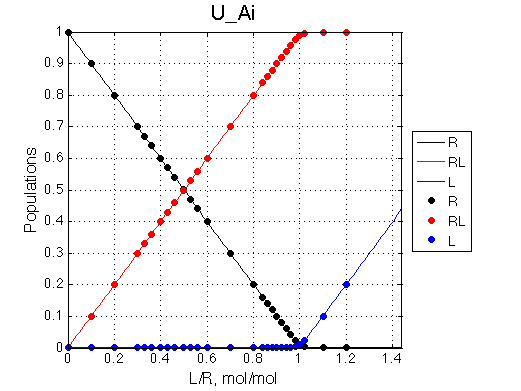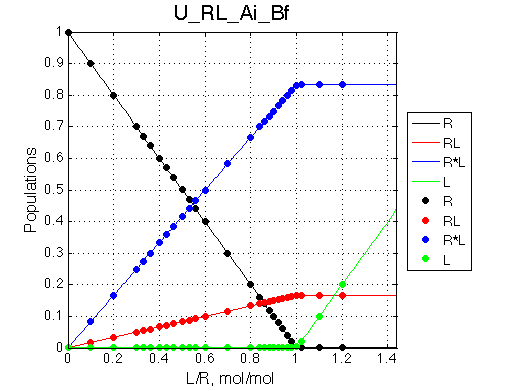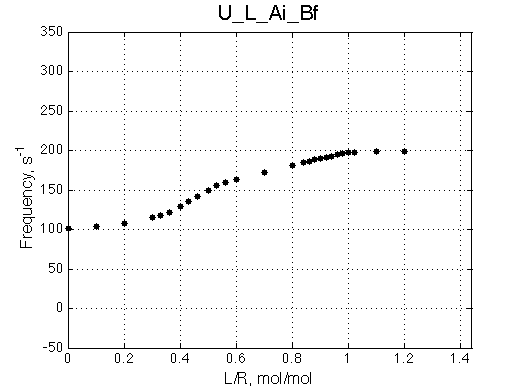



Simulate setup U_RL_Ai_Bf

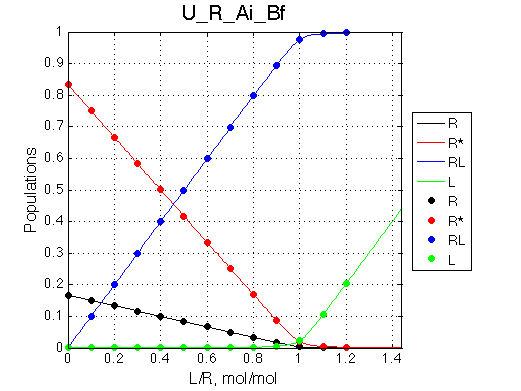
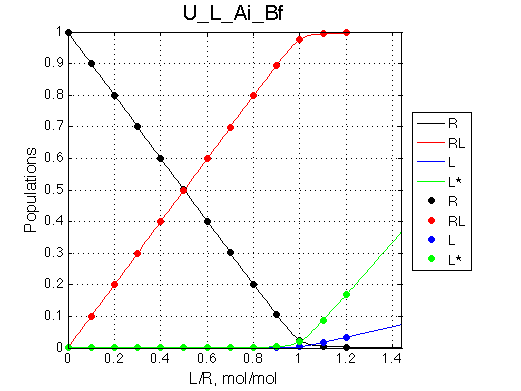

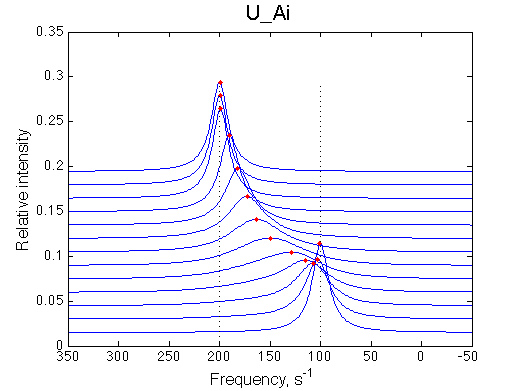
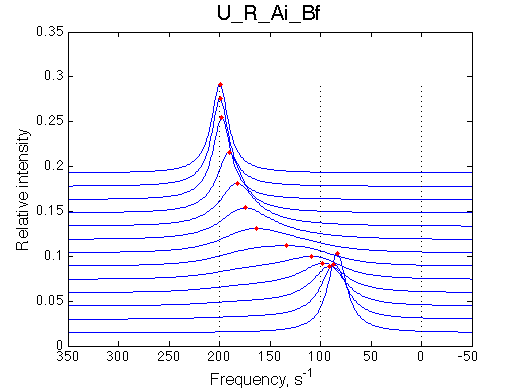
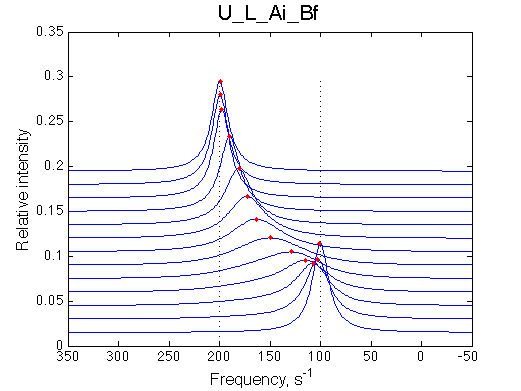
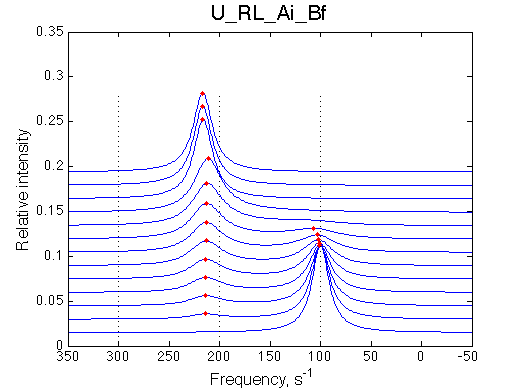
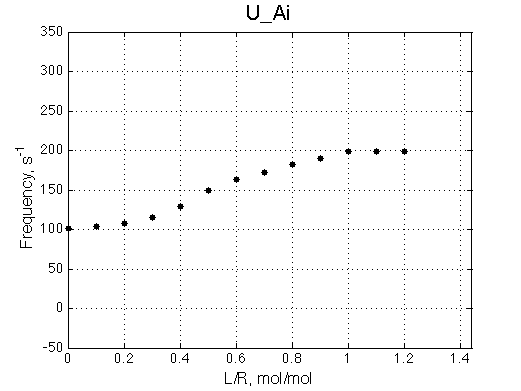
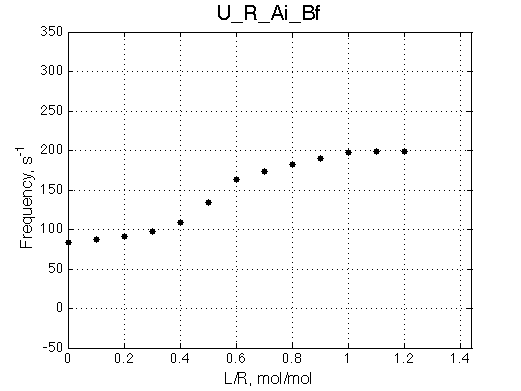

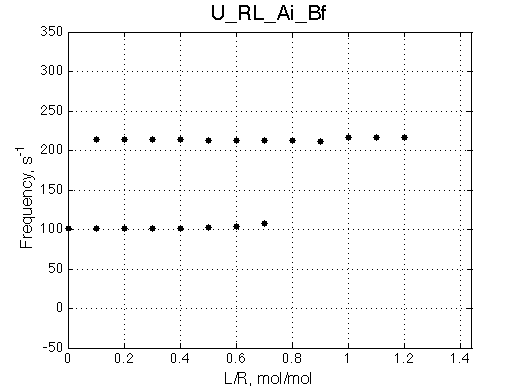
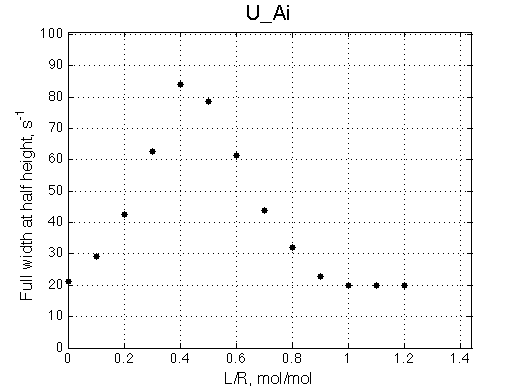
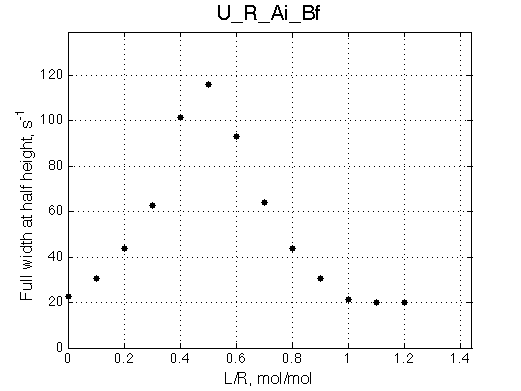
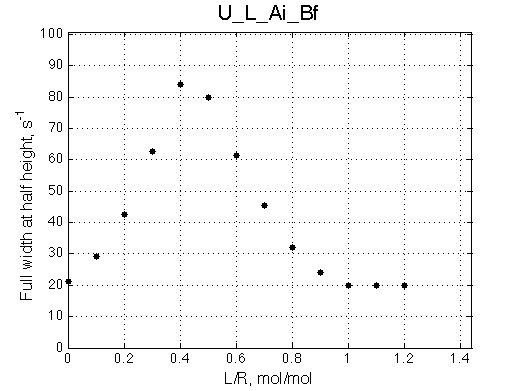
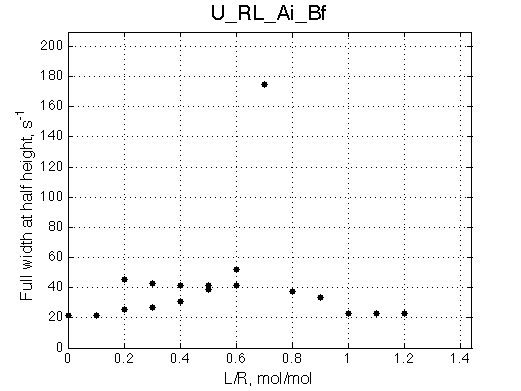
Fitting with the 2-site model:
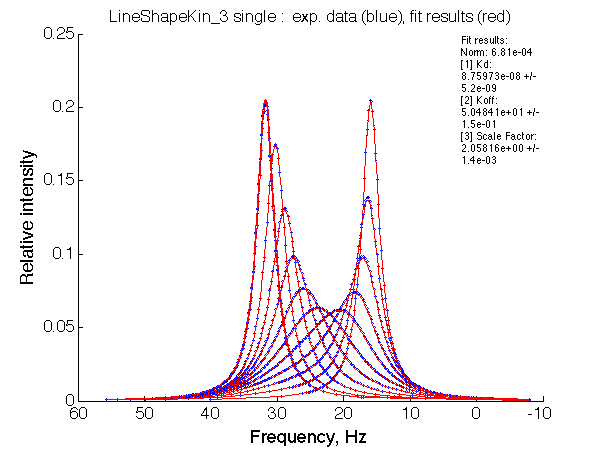



[1] Kd: 8.75973e-08 +/- 5.2e-09
[2] Koff: 5.04841e+01 +/- 1.5e-01
[3] Scale Factor: 2.05816e+00 +/- 1.4e-03
[1] Kd: 2.93019e-07 +/- 3.7e-08
[2] Koff: 4.22543e+01 +/- 5.9e-01
[3] Scale Factor: 2.05051e+00 +/- 6.7e-03
[1] Kd: 4.14096e-07 +/- 1.1e-08
[2] Koff: 5.00697e+01 +/- 1.6e-01
[3] Scale Factor: 2.05814e+00 +/- 1.5e-03
Optimum norm: 2.16e-03
[1] Kd: 1.56272e-08 +/- 4.5e-09
[2] Koff: 8.38918e+00 +/- 6.2e-02
[3] Scale Factor: 2.06848e+00 +/- 2.5e-03
The end of titration is systematically off
Simulate 2-site data for these fitted parameters
Compare fitted and actual peak positions and line widths
plotdatasets 'U_Ai_fit_chem_shift' 'L/R' 'Frequency, /s'
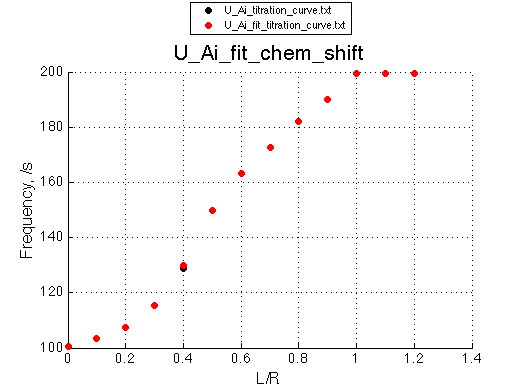
plotdatasets 'U_R_Ai_Bf_fit_chem_shift' 'L/R' 'Frequency, /s'

plotdatasets 'U_L_Ai_Bf_fit_chem_shift' 'L/R' 'Frequency, /s'
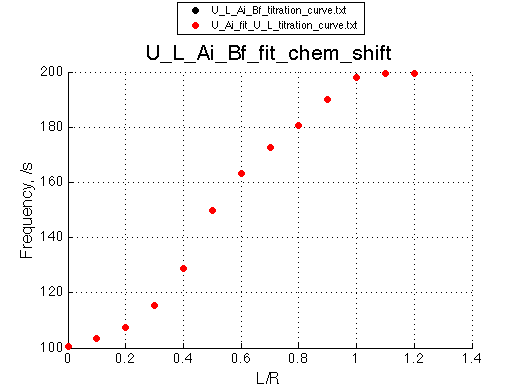
plotdatasets 'U_RL_Ai_Bf_fit_chem_shift' 'L/R' 'Frequency, /s'
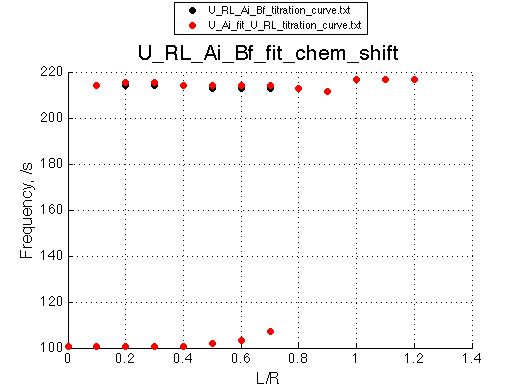
plotdatasets 'U_Ai_fit_LW' 'L/R' 'Frequency, /s'
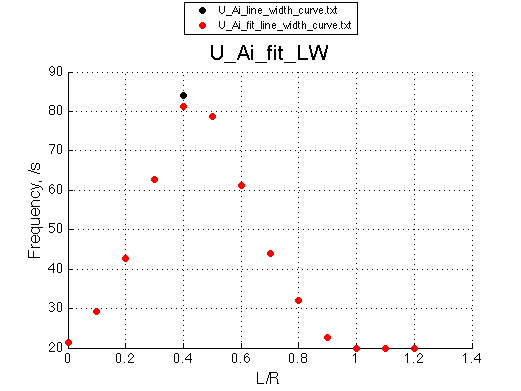
plotdatasets 'U_R_Ai_Bf_fit_LW' 'L/R' 'Frequency, /s'
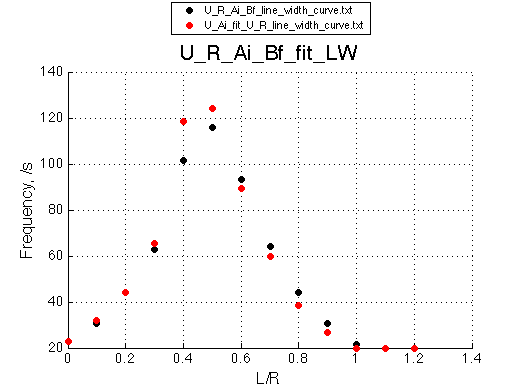
plotdatasets 'U_L_Ai_Bf_fit_LW' 'L/R' 'Frequency, /s'

plotdatasets 'U_RL_Ai_Bf_fit_LW' 'L/R' 'Frequency, /s'

